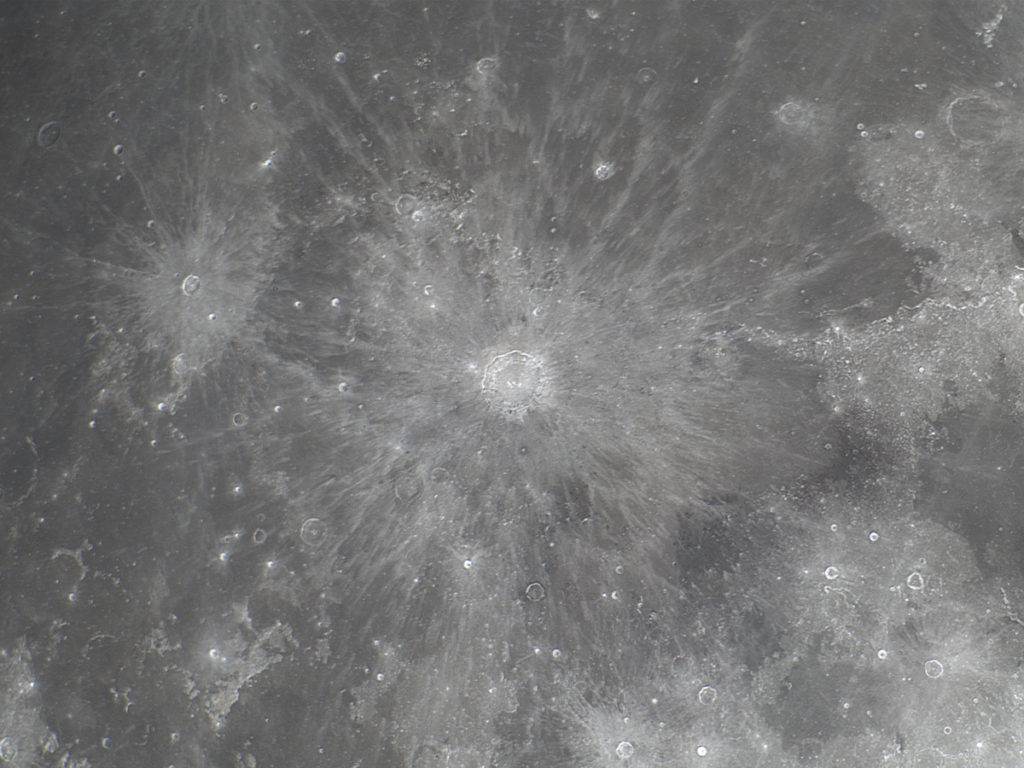
Telescope: Celestron C9.25 @ f/20, Orion Atlas EQ-G
Camera: ZWO ASI294MC, Gain 285
Filter: Highpoint Scientific IR Filter
Exposure: 64×0.01sec, saved as FITS
Seeing: fair, 3/5
White Balance: Nebulosity Automatic
Software: Sharpcap Pro, Nebulosity, Registax, Photoshop
Copernicus and its rays is one of the most beautiful structures on the lunar nearside and can even be seen with the naked eye as a bright region near the center of Oceanus Procellarum. The crater is 57 miles across, but only about 2.4 miles deep, making it about the same profile as a dinner plate. High resolution images of craterlets that radiate out from Copernicus reveal fishbone-like dunes that formed from the interference pattern of shockwaves that were generated during the formation of these crater chains some 800 million years ago. You can also see terraces circling the walls of Copernicus that formed as the terrain subsided after the impact. The smooth flat floor of the crater was selected as a landing site for one of the canceled Apollo 18-20 missions. This image is one of a set taken as part of the first-light check-out of the new to me C9.25.
Recent Comments